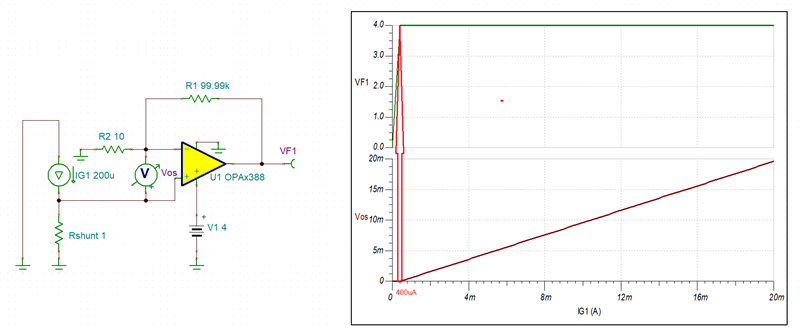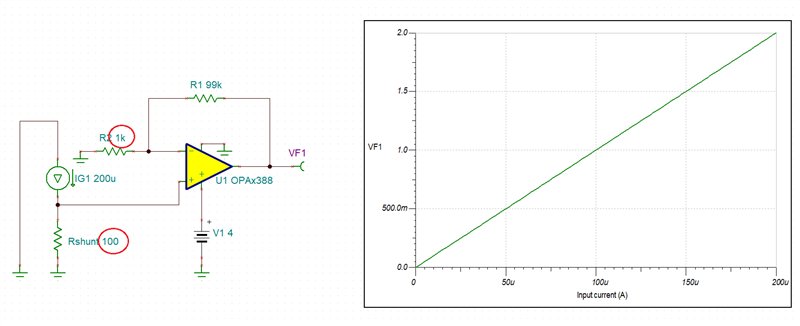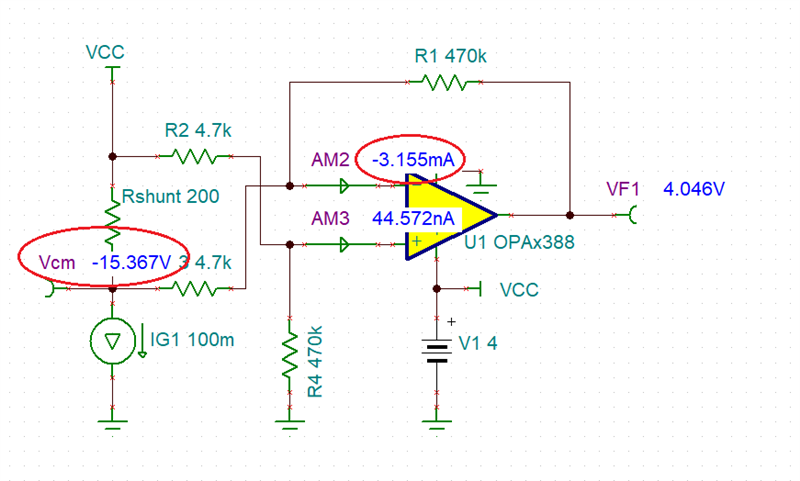Other Parts Discussed in Thread: TINA-TI
I'm using the OPA388 in a current-measurement design. I use the '388 to amplify (Gain = 10,000) the voltage across a shunt resistor, with the expectation that 200uA into the shunt generates 2V at the output of the '388. It works as expected with one big problem: if the shunt current is a few tens of mA, it drives the '388 to the output rail (4V) so hard that when the shunt current drops to zero, the output of the amp won't "let go" of the rail, staying high until the output is temporarily connected to GND (with, say, the tips of a current meter). I've tried connected the output to GND with a 10K and with a 1K resistor but this doesn't solve the problem.
Would a smaller resistor to GND help? I haven't seen an amp behave like this in the past.







